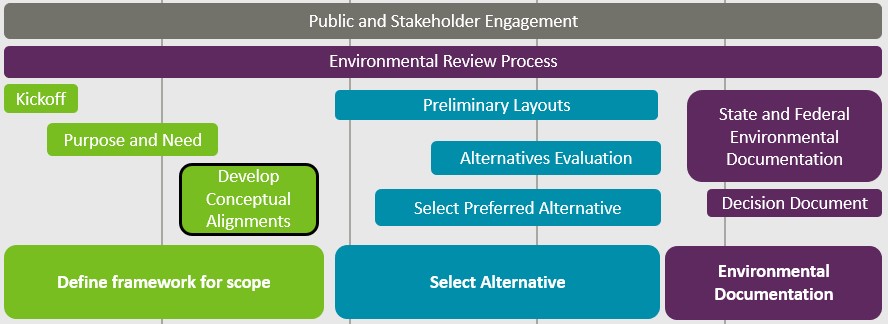Environmental process | Environmental Review
NEPA and Public Involvement
Purpose
Public involvement is required during the environmental review process, to different degrees depending on the NEPA class of action document. MnDOT also conducts additional public engagement efforts per guidance under TPDP Public Engagement.
- EIS (Class I) – Provides the highest degree of public involvement requirements, requiring early and continuous opportunities for public and stakeholder review and comment. Prior to concluding an EIS, MnDOT and FHWA must consult with and obtain the comments of any Federal agency with jurisdiction by law or special expertise with the impacted resources, provide copies to Federal, State and local agencies and the public, notify the public of the document availability for review and comment and hold a public hearing.
- EA (Class III) - The EA does not need to be circulated for public comment, but the document must be made available for public inspection at a MnDOT office and at the appropriate FHWA field offices for 30 days. Additional requirements include placing a notice in a local newspaper. A public hearing may or may not be necessary, discuss this with OES and FHWA.
- CatEx (Class II) – coordinate with OES to determine the level of public involvement necessary under NEPA.

Environmental Review Process
When to use this subject
Public involvement is required to some degree for all NEPA actions. See specific guidance for Class I, II, and III actions to determine public involvement requirements. Coordination with OES and FHWA will be needed for Class I and III actions, at a minimum.
How this subject fits into the overall project development process
This guidance applies to the NEPA process. Additional public involvement may be required under different laws such as Section 106 of the National Historic Preservation Act (refer to 36 CFR Part 800.2) and Section 4(f) of the Department of Transportation Act (refer to 23 CFR 774.5(B)(2)(i)).
Public hearings
- Quick Reference Guide for Holding a NEPA Public Hearing (PDF)
- Protocol for MnDOT Employees Holding a NEPA Public Hearing During Public Health Emergencies or Other Disruptive Events (PDF)
- Offer Opportunity for NEPA Public Hearing (PDF)
- “How to” Guidance for Submitting Comments on an Environmental Document (PDF)
- Certificate of Compliance Form (PDF)
Organizations involved
- MnDOT:
- Office of Environmental Stewardship
- Office of Communications and Public Engagement
- District Engineer
- Project Manager
- District Design
- District Environmental Reviewers
- CO State Aid (required only if local agency is involved and using federal aid funds)
- FHWA Minnesota Division
- Municipalities and counties
- Public and stakeholders
